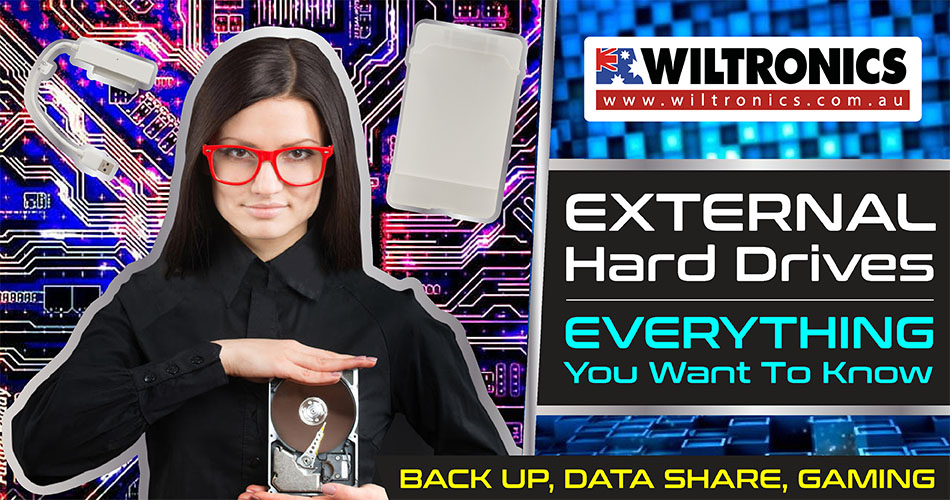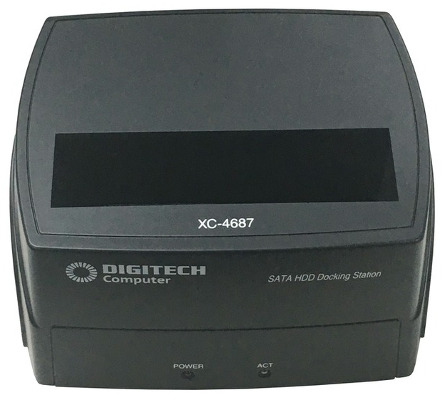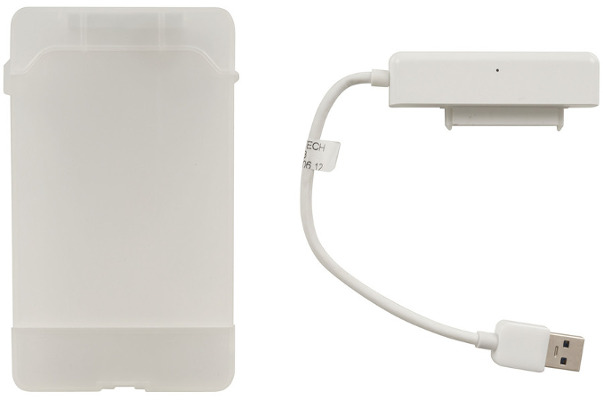Everything You Want to Know About External Hard Drives
September 29, 2022

In a previous post, we talked about USB flash drives. Today, we are going for the bigger version—external hard drives.
Technology has seeped into every part of our lives, and computers are no exception. The odds are that you use one to get work done or store your online footprint, e.g. data files, photos, and videos.
While computers make life more convenient, unfortunately, they do not have unlimited storage. You might run out of free space if you own tons of large files like editing and software, documents, and more.
This is where external hard drives come into play. A must-have device for storing and backing up all your computer data.
If you are thinking of investing in one, this guide will help you make better buying decisions. A short comparison between NAS vs external hard drives is also put together below.
A Brief History
IBM engineer Reynold B. Johnson came up with the idea of the external hard drive.
The initial IBM hard drives were external as they did not run internally within computers. Johnson’s concept of the hard drive took on a new form within the computer industry in 1994 when the technology was introduced by seven technology giants, including:
- IBM
- Compaq
- DEC (Digital Equipment Corporation)
- Intel
- Microsoft
- NEC
- Nortel
These companies innovated on the external hard drives that we understand and use today.
External Hard Drives Explained
Computers have built-in storage media, but in most cases, it is not enough. A great way to increase that storage capacity is using an external hard drive.
External hard drives are hardware components ideal for storing digital content. They are deemed as the central storage bank for documents, as well as a backup and data sharing solution.
External hard drives are also known by a few names:
- External hard disks
- Portable hard drives
- Hard disk drives (HDDs)
Varying storage capacities are available, from 200GB (Gigabytes) to 1TB (Terabytes). They all connect to a computer by USB ports or wirelessly, and as the name suggests – externally.
Everything stored is measured by the file size. Documents or texts, for one, generally have small sizes. Meanwhile, videos have a much larger size than pictures and music.
The sizes of these digital files are also determined based on MB (Megabytes), GB, and TB.
How to use external hard drives?
Using an external hard drive is as easy as plugging a USB flash drive into the computer. On most computers, it takes only a few moments before the contents of the external drive load.
From there, you can start moving files to your computer or the drive. Regarding software, you can use an external hard drive the same way you would with an internal one.
The only difference is how you access the drive in your operating system.
The Components
An external drive has four key components inside its casing:
- Platter (for storing data)
- Spindle (for spinning the platters)
- Read/write arm (for reading and writing data)
- Actuator (for controlling the actions of the read/write arm)
Platter
A platter is one or more aluminium, glass, or ceramic disk/s coated in a magnetic media. It is in a circular disc shape with a magnetic surface where the data is stored. When the computer is turned on, these platters begin to rotate at many RPM (rotations per minute).
On larger hard drives, platters are used to increase the capacity of the drive. Data is stored in tracks, sectors and cylinders of the platter to keep it organised and easier to find.
Spindle
A spindle is a shaft that holds rotating hard disk drive (HDD) platters in position. It keeps the platters at a fixed distance apart from each other, allowing the read/write arm to gain access.
The RPM rating determines how fast data can be read and written from the hard drive.
Read/write arm
Responsible for reading and writing data to the platters in a hard drive. There is one head for every platter side, floating 3 to 20 millionths above the platter surface.
The arm ensures the heads are in the right position based on the data that needs to be written or accessed. If the heads are damaged, accessing data will be impossible.
Actuator (Head actuator)
A small motor that takes instructions from the drive’s circuit board. It controls the movement of the read/write arm and supervises the transfer of data to and from the platters.
It also makes sure the read/write heads are in the exact right place at all times.
What is the best size for external hard drives?
That depends on you and your computer storage needs. If it is mainly keeping documents, a smaller drive will do the work. But if it is for storing lots of videos and other editing outputs, you will need a larger one.
The smallest external hard drives on the market today tend to hold around 128GB. While other models hold 10TB, which has an almost 10,000% difference.But the most popular capacity is 1TB and 2TB.
Top Uses of External Hard Drives
You can use external hard drives for so much more than storage!
Storage
External hard drives are mainly for storage. As mentioned, computers are already equipped with internal hard drives. But in many cases, they are not enough.
With an external hard drive, you do not have to worry about lacking storage space. You can keep your permanent computer data, including files, photos, or software.
Backups
Corrupted window files are one of our greatest enemies. To protect your computer data, you should keep backups.
A backup means you send a second copy of your files to your external hard drive. In case something happens to your computer, you will have everything available.
Data Sharing
An external hard drive also allows you to transfer more data at a faster speed. Suppose you are trying to move data from an old PC to a newer one.
Store the data on the external drive, then connect it to your new computer, and you are ready to transfer. It works like a USB flash drive but with much more storage space.
The best external hard drives on the market have fast connectors, e.g. USB-C or Thunderbolt.
Gaming
Modern PC games can take up a lot more space on your computer. If you are a hardcore PC gamer, an external hard drive makes a great investment.
If your computer runs low on free space, it won’t perform as fast as before. But an external hard drive can even boost your gaming performance.
NAS vs External Hard Drives
Besides hard drives, you also might come across NAS for storage solutions. Are there any differences, and which one fits perfectly in line with your storage needs?
But before we jump into that, what is NAS? Standing for Network Attached Storage, NAS is network-attached file-level data storage. Moreover, it makes stored data more accessible to networked devices.
Numbers of computers
If you own a single computer, you are better off with an external hard drive. But if you got two or more, network-assisted storage is your best bet.
With a NAS, all your PCs connected to your router will have simultaneous access to data on the device.
Convenience
Using an external hard drive on another computer will require you to shuffle the drive(s) from PC to PC. Meanwhile, a NAS only needs you to connect to your network to access files. The latter also frees up ports on your computer.
Size and mobility
Generally, external hard drives are compact and built to fit in backpacks or pockets even. They do not necessarily need an Internet or power supply to function.
NAS, in contrast, usually comes in the form of boxes meant to be placed in a permanent position. They need to be plugged into a power source and router to function.
Accessibility
An external hard drive must be plugged into a port on your computer to have access to files or other documents on it. With NAS, you can remotely access files on the device from anywhere in the world, as long as you have an account set up.
This Cloud service is a feature on most Network Attached Storage devices.
The verdict:
A NAS device is more expensive and is best for a setup of multiple users/computers. You will need one if you have a small business or use more than two PCs at home.
And an external hard drive would be the ideal option if you need extra storage for a single computer. Or for personal use.
Considering the features, price, and ease of use, it is great to have on the go. It also comes in handy when all you need extra storage for is to carry large sets of data all the time.
Get Your External Hard Drive Accessories Here!

USB 3.0 to SATA External Hard Drive Docking Station
Product code: JXC4687
Connect your SATA hard drive to a PC with this USB 3.0 to SATA External Hard Drive Docking Station. It features plug-and-play capabilities and is compatible with SATA 3.5” or 2.5” hard drives.
Maximum HDD Size: 8TB
Compatibility: Windows 2000/XP/Vista/7/8/8.1/10+. macOS® 10+

USB to SATA Adaptor for 6GB Hard drive with case
Product code: XC4152
Easily connect a 2.5 Inch SATA 6G Hard Drive to a USB device with this USB to SATA Adaptor. It features up to 5Gbps transfer and is compatible with USB 3.0 and USB 2.0.
Includes a hard back case to protect your HDD.
The Bottom Line
You can never go wrong with external hard drives when boosting digital storage. They are the key for devices that are slow and running out of space.
If you are looking for the best storage solution, opt for a model with a 1TB capacity or go bigger.
This article was originally published in August 2021 and has been updated.
© Electrotech Brands Pty Ltd 2022


Write a Comment
You must be logged in to post a comment.